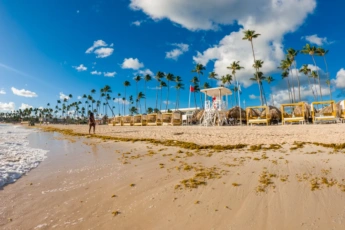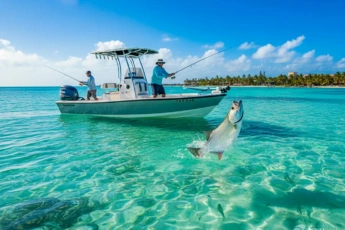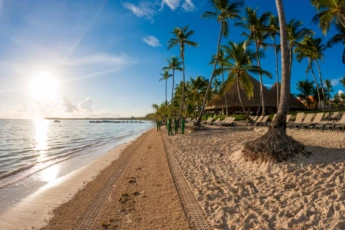Punta Cana Fishing 2026 – Complete Guide to Species, Seasons, Costs, and Local Tips
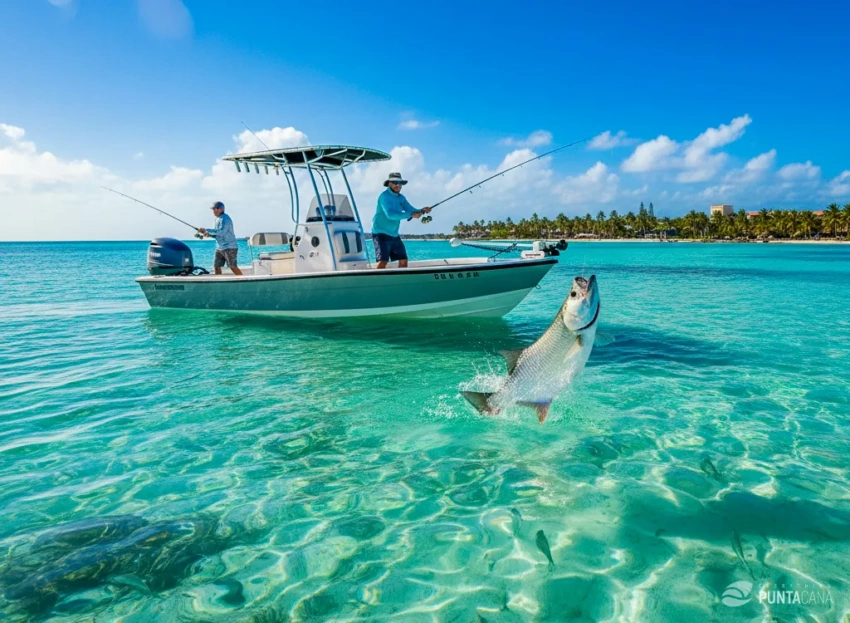
Fishing in Punta Cana
Fishing is extremely popular in Punta Cana, thanks to its unique geographic location and rich marine environment, which create ideal conditions for sport and recreational fishing.
A standout moment came in 2013, when Billfish Report called Punta Cana’s blue marlin season “one of the best the world has ever seen.” More recently, in 2020, Captain Edgar reported releasing 597 blue marlin in one season, showing just how productive these waters can be.
What exactly makes Punta Cana
so special for anglers?
- Unique geography. Punta Cana sits on the eastern tip of the Dominican Republic, right at the junction of the Atlantic Ocean and Caribbean Sea. This mixing zone creates a particularly biodiverse and productive marine ecosystem. That’s why deep-sea fishing here is considered among the best in the region.
- Deep water close to shore. One of Punta Cana’s greatest advantages is how close deep water is to the coast. Just a few miles out, the continental shelf drops off sharply – unlike most Caribbean destinations, where you’d need to travel much further for serious fishing. This allows anglers to access species like mahi-mahi, tuna, wahoo, and marlin with minimal travel time.
- Warm, nutrient-rich waters. The tropical waters around Punta Cana are warm all year and often nutrient-rich. This supports a strong food chain, from plankton to large fish. That means both migratory species (like marlin and tuna) and resident reef fish thrive here.
- Well-developed tourism and fishing infrastructure. Punta Cana’s popularity as a tourist destination has driven the growth of extensive infrastructure – marinas, fishing charters, and tour operators are easy to find and generally beginner-friendly. This makes fishing accessible and convenient for both visitors and locals.
- Diverse coastal habitats. The coastline isn’t just for big-game anglers – there are coral reefs, shallow lagoons, and underwater structures perfect for reef fishing and spearfishing. These areas support species like snapper, grouper, and barracuda, and are especially good for families or those new to fishing.
Punta Cana’s reputation as a fishing hotspot isn’t by chance. Its blend of unique geography and well-developed infrastructure makes it biologically rich and logistically easy for all types of anglers – from first-timers to seasoned pros.
-
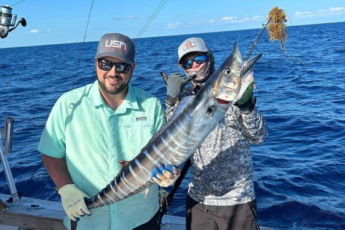
Private Punta Cana Fishing Tour Aboard the Miguelina – 4 Hours of Trolling Fishing
from $600 View Details -
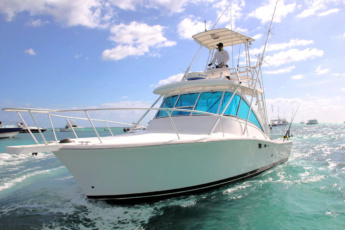
Private Fishing Charter on 32-foot Boat – Punta Cana Deep Sea Fishing Tour 2026
from $640 View Details -
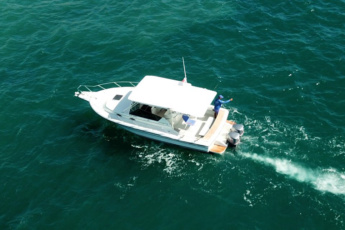
Private Boat Trip in Punta Cana on Scorpio Boat – Ideal for Small Groups (6 Guests)
from $1500 View Details -
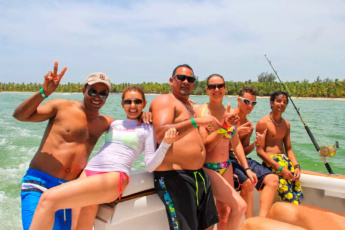
Deep Sea Fishing in Punta Cana on a 37ft Sport Boat – Private Trip with Snorkeling
from $660 View Details -
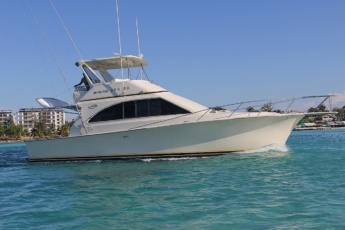
4-Hour Punta Cana Charter Fishing Trip on Fortuna 42 Boat (Bavaro Coast)
from $720 View Details -
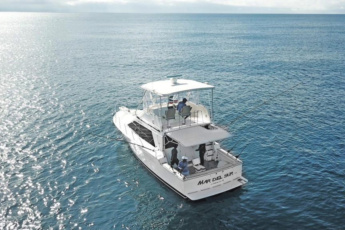
Punta Cana Private 40ft Boat Charter – Mar Del Sur Yacht, Up to 9 Guests with Fishing Option
from $1625 View Details -
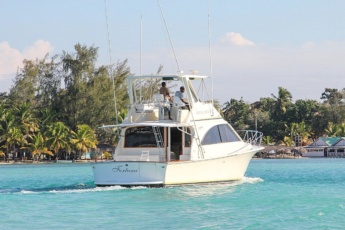
Deep Sea Fishing in Punta Cana, Dominican Republic – 6-Hour Private Charter on Fortuna 42
from $800 View Details -
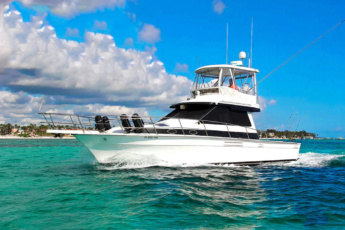
6-Hour Punta Cana Deep Sea Fishing on Sherlock 39 Boat (Bavaro)
from $780 View Details -
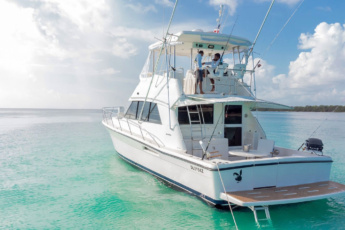
VIP Punta Cana Fishing Tour – Private Yacht Trip to Saona Island, Natural Pool & Snorkeling
from $3180 View Details -
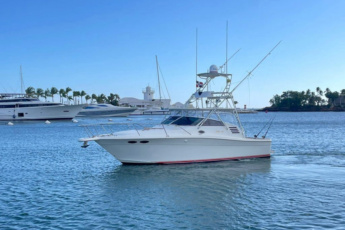
Private Punta Cana Boat Tour on a Sea Ray 35 – Snorkeling, Professional Crew, Licensed Captain
from $1813 View Details -

Private Boat Rental in Punta Cana – Consuelo 28ft Boat with Optional Fishing Experience
from $1375 View Details -
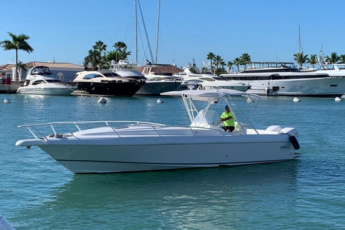
Punta Cana Private Boat Charter aboard Intrepid 37 – Explore Saona, Catalina + Optional Fishing
from $1875 View Details -
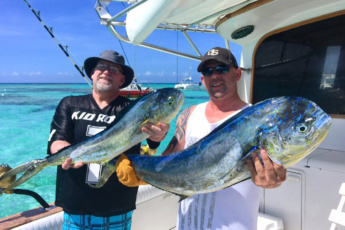
Deep Sea Fishing Punta Cana – Private Trolling Charters Aboard Blue Sky Boat (Up to 5 Guests)
from $650 View Details -
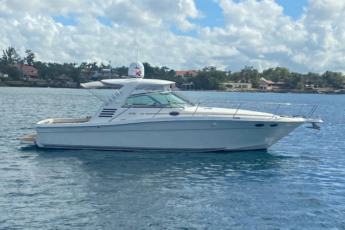
Top-Rated Punta Cana Yacht Rental – Explore the Dominican Republic on a Private Boat – Sea Ray 37
from $2094 View Details -
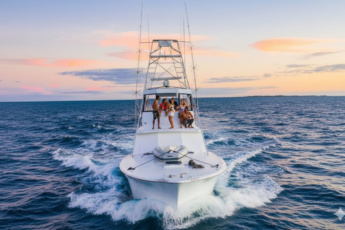
Private Boat in Punta Cana – Hatteras 53 Luxury Boat up to 15 people
from $2533 View Details -

4-Hour Deep Sea Fishing in Punta Cana on Sherlock 39 Boat
from $680 View Details -
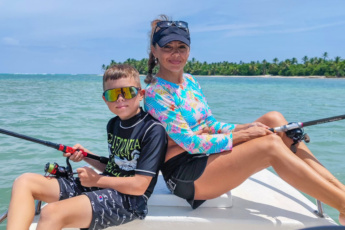
Private Punta Cana Boat Tour with Snorkeling & Trolling Fishing – From Jellyfish Beach to Cabeza de Toro
from $140 View Details
Can tourists fish in Punta Cana?
Yes, tourists can fish in Punta Cana. There are no strict regulations stopping visitors from enjoying the local fishing scene. Most people here aren’t serious anglers, and seafood isn’t a big part of the local diet – chicken and pork are much more popular, which probably helps explain the relaxed rules.
- You don’t need a special fishing license for catch-and-release or casual fishing.
- No one will hassle you if you show up with a rod and try your luck, either from the beach or on a boat.
- Most marinas and charters are set up to welcome tourists and beginners.
So if you’re interested, go ahead and give it a try. It’s accessible, low-hassle, and you don’t have to worry about breaking any rules as a visitor. If you want more details about local etiquette or gear, just ask – there’s always someone willing to help out.
What Fish Can You Catch in Punta Cana?
Species Guide 2026
White Marlin
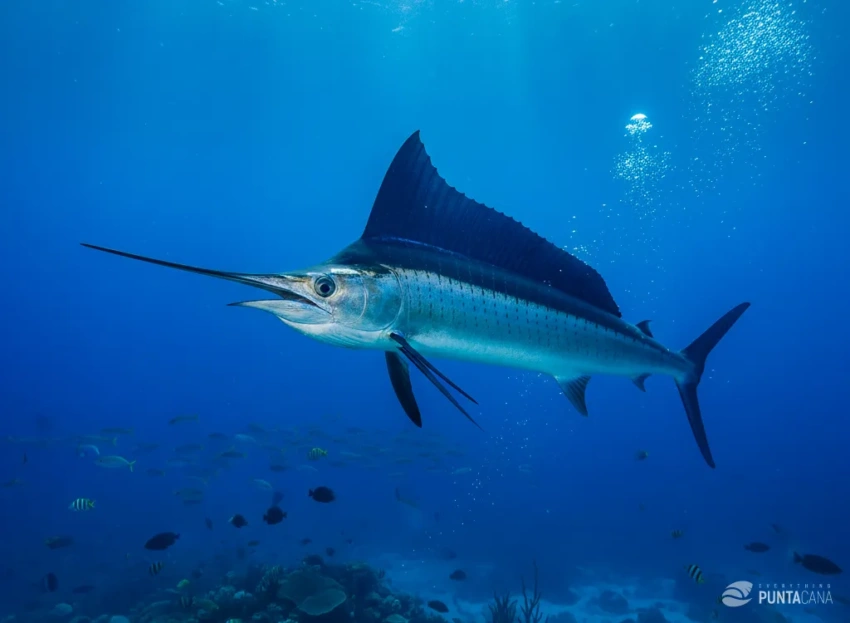
White Marlin
Profile and key fact
A coveted billfish in Punta Cana, white marlin are all finesse: pale bodies, a rounded dorsal fin, and cartwheeling acrobatics once hooked. They are among the smaller billfish, typically 40–80 lb, with occasional fish surpassing 100 lb. Interestingly, they are often more broadly built than their length suggests, giving them a stocky appearance.
Season, spots and tactics
Best April–June when cobalt water rides the shelf. Work color changes, rips, and FAD perimeters where ballyhoo and halfbeaks stack. Pull small skirted ballyhoo, tiny chuggers, or dink lures; keep a pitch bait for switch-baiting off teasers. Fish 20–30 lb stand-up, 60–80 lb fluoro leaders, non-offset circle hooks, light drags, and smooth boat angles. Photos only with the fish in the water.
Release-first approach
Bycatch and sport pressure add up. Minimize air exposure, avoid dry decks, cut the leader if deeply hooked, and revive head-into-current until it surges. Ask for tag-and-release. If you meet one on a dive at the drop-off, enjoy the sight – the memory is the trophy.
Sailfish
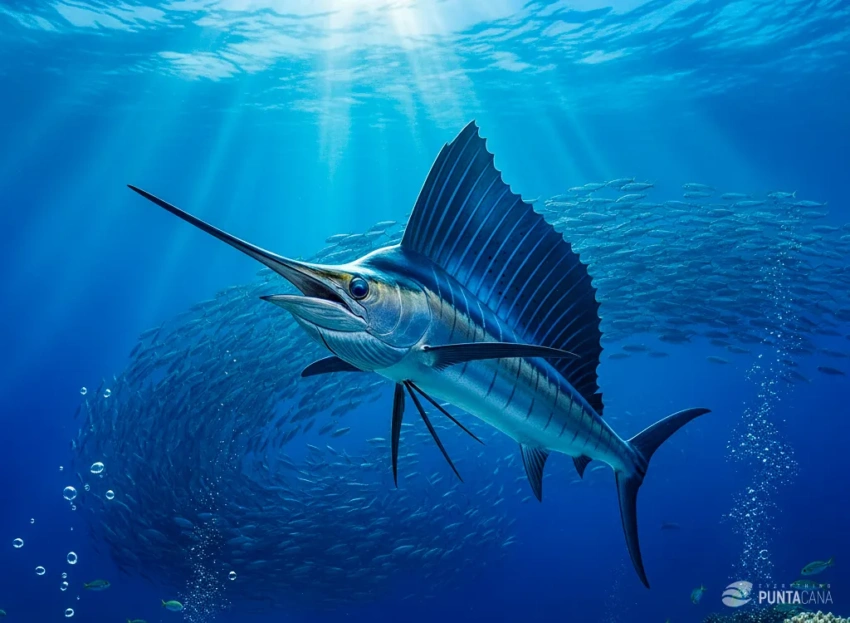
Sailfish
What makes them special
Towering sail, neon bars when lit up, and true speed with bursts near 68 mph (110 km/h), plus tail-walking acrobatics. Their sail is not just for show; it is used to herd schools of baitfish, creating a feeding frenzy.
When they arrive, where to look, how to fish
Most reliable December–March on cooler pushes. Hunt color lines, bird piles, and bait balls. Troll small rigged ballyhoo or feathers, or send live goggle-eyes on circle hooks. Keep fights short on 30–50 lb gear and de-hook with the bill and head submerged.
See it, don’t kill it
Cockpit lifts spike mortality. Do the release boat-side, no deck shots, crush barbs if you plan to let go. For zero impact, drift a reef on snorkel or scuba when bait stacks and watch a pack of sails herd anchovies – pure theater, zero harm.
Mahi-Mahi (Dorado)
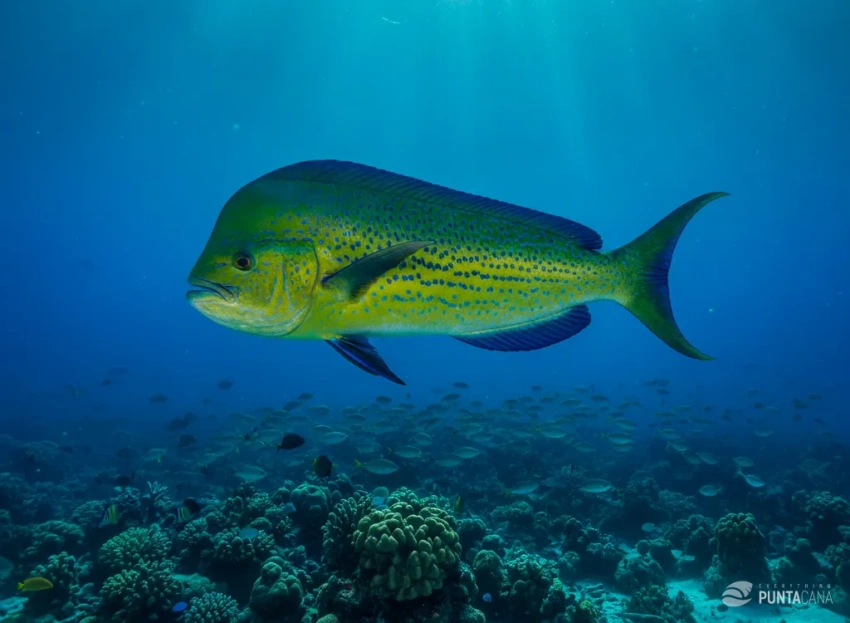
Mahi-Mahi (Dorado)
Color and life-history in one glance
Neon gold-green-blue rockets that fade quickly once landed. Fast-growing, quick to reproduce, and short-lived (about 4–5 years), a profile that can support harvest when managed well. They are opportunistic feeders, often found near floating debris where smaller fish and crustaceans gather.
Seasonal pattern, holding areas and presentations
Common most of the year; action often fall through early spring. Target weed lines, floating debris, and FAD halos. Find them with feathers or jet heads, then pitch chunks or live baits after the first hookup. Keep the boat creeping, rotate anglers, do not burn the school.
Sustainable harvest without over-taking
Great table fare when responsibly sourced. Keep only what you will eat today, release big cows (prime breeders), and ice instantly. Or swim a weed mat with a camera – see the floating city (juvenile mahi, triggerfish, crabs, bait) without removing fish.
Yellowfin Tuna
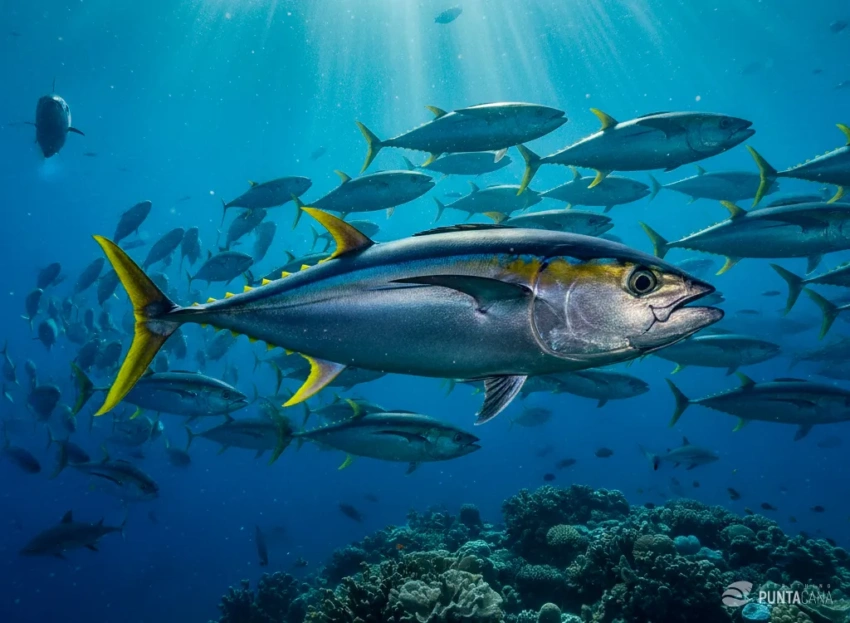
Yellowfin Tuna
Form, physiology and one useful fact
Torpedo bodies with yellow finlets and endless stamina. Highly migratory and regionally endothermic, keeping key muscles warm to hunt in cooler, deeper water. This ability to regulate body temperature allows them to hunt efficiently across various depths and temperatures, giving them a significant predatory advantage.
Calendar, structure and proven methods
Present year-round offshore, often steadier in warmer months near FADs and bird life. Cover ground with small trolling lures; when life erupts, throw poppers or stickbaits into foaming schools or drop vertical jigs on marks. Use 60–100 lb fluoro, strong singles or assist hooks, and keep boat noise modest.
Low-impact choices that add up
Watch size and limits and bleed and ice immediately if you keep one. Never chase marine mammals and do not crowd boats on a FAD. If the school is small or stressed, take photos and slide off – leave it to feed and recover.
Wahoo
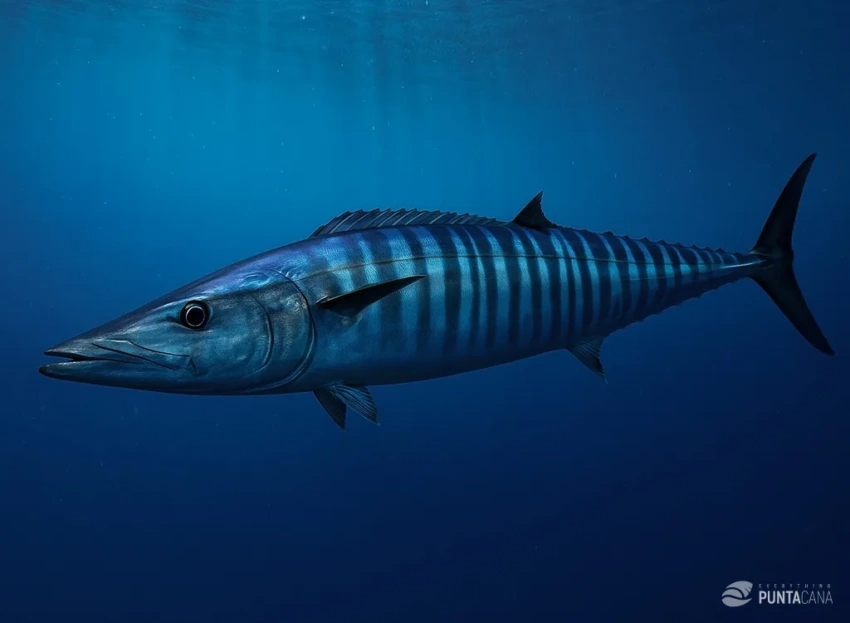
Wahoo Fish
Speed, stripes and a bit of lore
Silver-sided predators with cobalt bars and surgical teeth. The first run is a reel-scream, hence the “waa-hoo” lore. They possess incredible acceleration, capable of reaching up to 60 mph (96 km/h) in short bursts, making them one of the fastest pelagic fish.
Timing, edges and high-speed programs
Best late fall through winter along steep drop-offs and fast current seams. Run 10–16-knot high-speed trolling with weighted heads, deep divers, or rigged baits on wire or heavy fluoro (100–150 lb). Stagger depths, use planers or inline weights, and make wide turns.
Take one, respect the rest
Generally stable, but they are apex hunters shaping food webs. One quality fish feeds a crew – skip stacking fillets. Bleed and ice quickly if kept. Or trade a second pass for a scuba camera drop and film those bars flashing through bait – impact near zero.
Blue Marlin
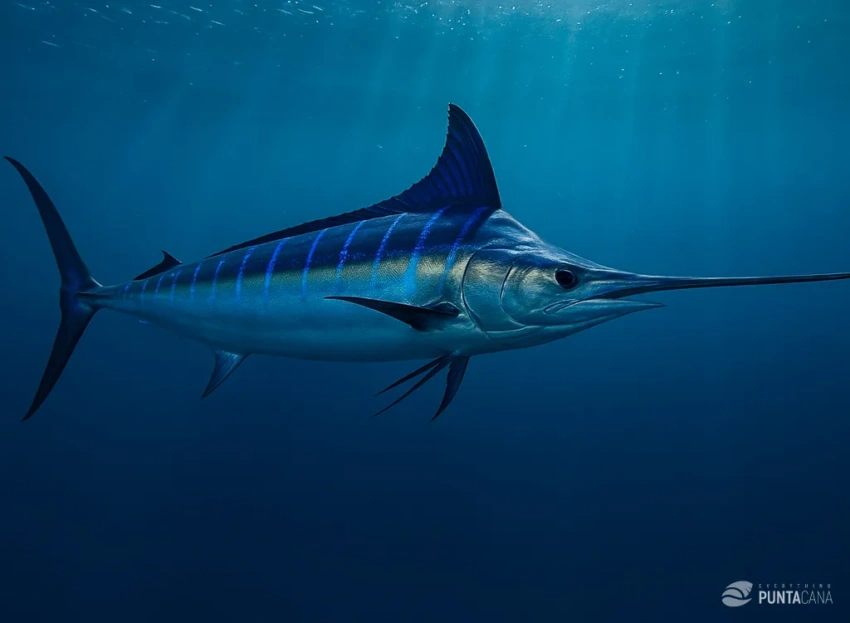
Blue Marlin
Flagship status and size reality
Massive power and spectacle. Females dwarf males; exceptional fish exceed 1,000 lb (450 kg) and 14 ft (4.3 m). They are solitary hunters for much of their lives, only coming together to spawn. Their sheer size and strength make them true ocean giants.
Warm-water pushes, boat positioning and execution
Summer into early fall when warm cobalt water hugs the shelf. Pull large lures or softheads, run aggressive teasers, and keep a pitch bait ready. Use heavy tackle to shorten fights; leader cleanly, no gill grabs, crew coordinated.
Tag, don’t hang
Slow growth and late maturity make them vulnerable – tag-and-release only is the recommended practice for this species. Keep the head submerged for photos; capture length and girth instead of hanging weight; revive properly. Or book a blue-water wildlife day for the same magic, hook-free.
Snapper
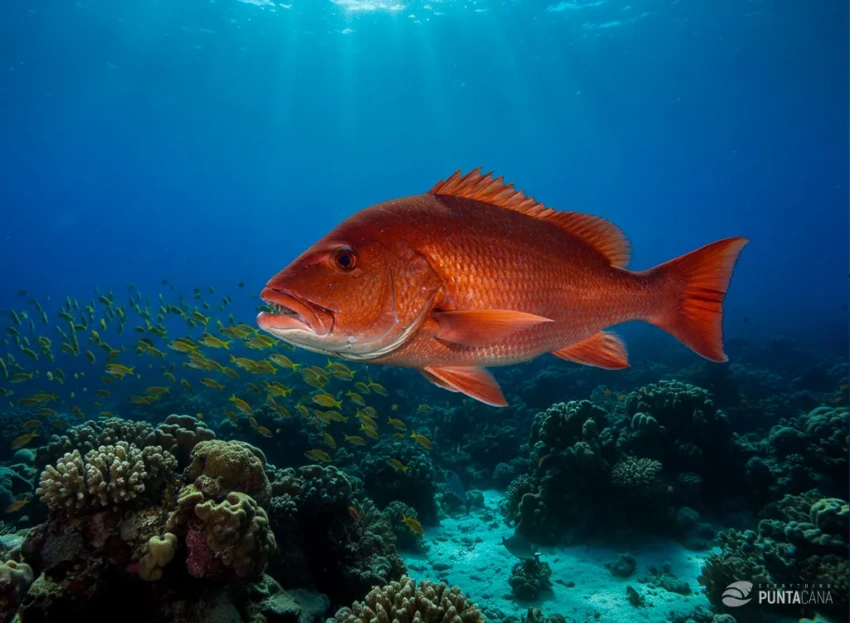
Snapper
Diversity and a night-time detail
From vivid reds to subtle grays; many species are nocturnal hunters. Big, old snappers are disproportionate breeders, critical to future stocks. Some species, like the Yellowtail Snapper, form large, dazzling schools over reefs, a fantastic sight for divers.
Best light, reef zones and rigs
Year-round on reefs and wrecks; dawn and dusk shine.
- Yellowtail: steady chum, tiny circle hooks (1/0–2/0), long natural drifts.
- Mutton: live pinfish or ballyhoo on knocker rigs or slow-pitch jigs along sand lanes and edges.
Scale leaders for wary fish; steady pressure, no hay-maker swings.
Selective harvest over meat hauls
Some stocks (for example, regional red snapper) are vulnerable. Take modest, legal fish, release big breeders, and mind ciguatera risk in larger reef predators. For the best show, dive shallow coral and film yellowtail walls – zero extraction.
Grouper
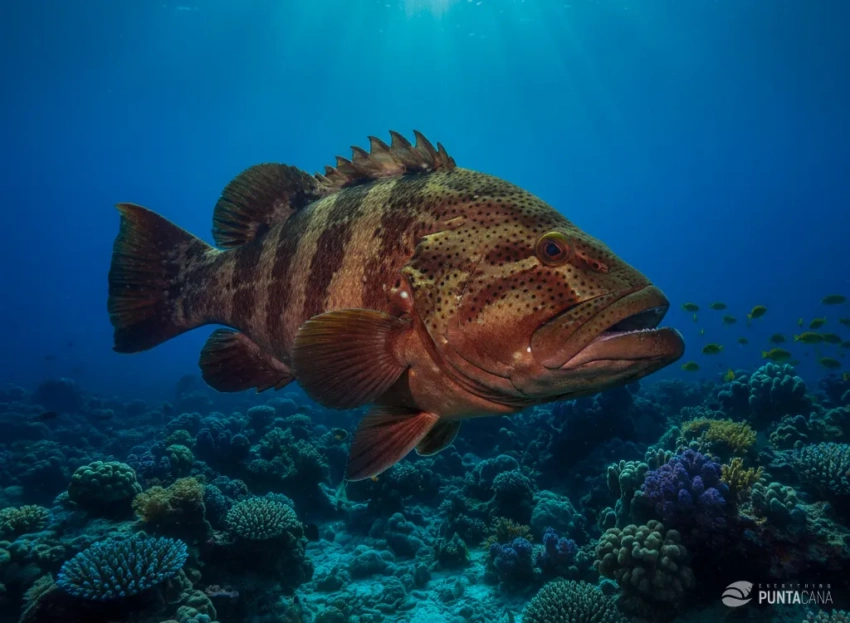
Grouper
Ambush style and a reproductive quirk
Thick-bodied ambushers with vacuum-mouth strikes and firm, flaky meat. Many are protogynous hermaphrodites – female first, then male – so removing big males can destabilize reproduction. This makes larger, older individuals especially vital for the health of the population.
Structure, first-run pressure and smart rigs
On ledges, rocky bottoms, and wrecks all year. Nassau grouper is rare and protected across much of the Caribbean; several species have seasonal closures. Fish live baits or slow-pitch jigs tight to structure. Win the first meters – lock down early, then play it smart.
Protect big fish and spawning sites
Slow growth and site fidelity make large groupers soft targets. Never target spawning aggregations. Use a descending device for deep releases; vent only if trained. Release protected species immediately, and prefer scuba observation over spearing or heavy harvest – the thrill of witnessing these majestic creatures in their natural habitat is unmatched and causes no damage.
Barracuda
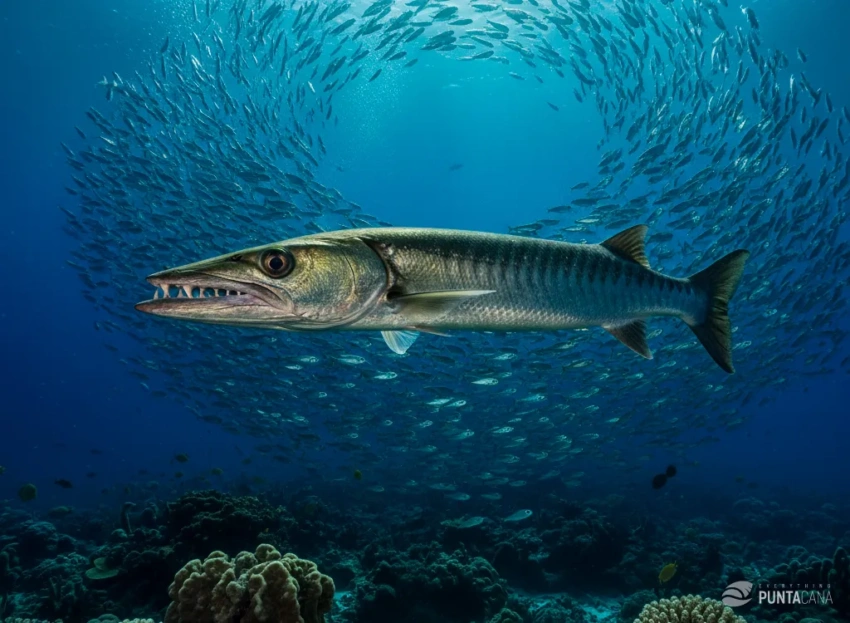
Barracuda
Look and behavior, minus the myths
Sleek torpedoes with razor smiles. Bites on people are rare and usually a shiny-object mistake. They have keen eyesight and are attracted to glints, which is why divers are advised against wearing shiny jewelry.
Habitat, retrieve speed and safe handling
Year-round on reef edges, flats, and channels. Fish fast: tubes, spoons, or topwater with wire leaders. Use long-nose pliers, de-hook boat-side, and mind the dentistry.
Why release is usually best
Mid-web predators that prune weak baitfish. Larger fish often carry ciguatera, so release is the smart play. Skip hand-feeding on snorkel tours, avoid flashy jewelry, and treat barracuda as photography gold, not groceries.
Tarpon
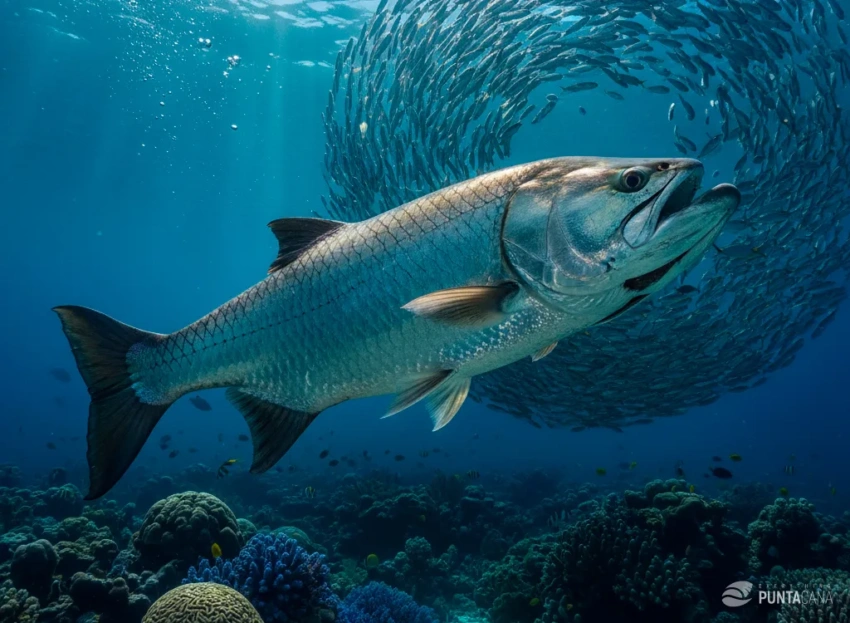
Tarpon
Ancient design and a breathing quirk
Silver kings with prehistoric lines and airborne drama. A modified swim bladder acts like a lung, letting them gulp air and thrive in low-oxygen water. This unique adaptation allows them to inhabit diverse environments, from clear ocean waters to murky estuarine lagoons.
Dawn windows, quiet water and clean hookups
Year-round in lagoons and mangrove channels; dawn and evening glass-calm windows are prime. Go stealthy (push-pole if possible). Present paddletails, shrimp plastics, or live baits on single inline hooks. Bow to the jump, avoid high-sticking, keep fights efficient.
Release practices that actually help
Almost entirely a catch-and-release fishery. Keep fish in the water, support the belly, no vertical jaw holds, and limit photo time, especially in warm, low-oxygen conditions. De-hook with pliers, roll gently to flow water over the gills, and release when it kicks hard. The best souvenir is a silver roll at first light, not a grip-and-grin.
Punta Cana Fishing Calendar: Species,
Best Time, Place, Method
| Fish | Best Time | Place | Type |
|---|---|---|---|
| Blue Marlin | July – September | Offshore | Trolling (Boat) |
| White Marlin | April – July | Offshore | Trolling (Boat) |
| Mahi-Mahi (Dorado) | Year-round, best in warmer months | Offshore | Trolling (Boat) |
| Yellowfin Tuna | All year, more active spring & fall | Offshore | Trolling (Boat) |
| Wahoo | November – March | Offshore | Trolling (Boat) |
| Sailfish | November – February | Offshore | Trolling (Boat) |
| Snapper | Year-round | Inshore, Reefs | Bottom Fishing, Shore, Spearfishing |
| Grouper | Year-round | Inshore, Reefs | Bottom Fishing, Spearfishing |
| Barracuda | Year-round | Inshore, Reefs | Trolling, Casting, Spearfishing |
| Tarpon | Spring & Summer (sporadic) | Lagoons, Estuaries | Casting, Fly Fishing |
Punta Cana fishing ethics – practical checklist
- Non-offset circle hooks for all natural baits; pinch barbs on lures you will release.
- Wet hands, rubberized net, no deck photos, no gaffs on release fish.
- Respect MPAs, size and season limits, and grouper closures; ask your captain for current regulations.
- Take only what you will truly eat today; for rare or slow-growing species, the most impactful and ethical encounter is a scuba or snorkel sighting, leaving them to thrive undisturbed.
Blue Marlin Fishing in Punta Cana
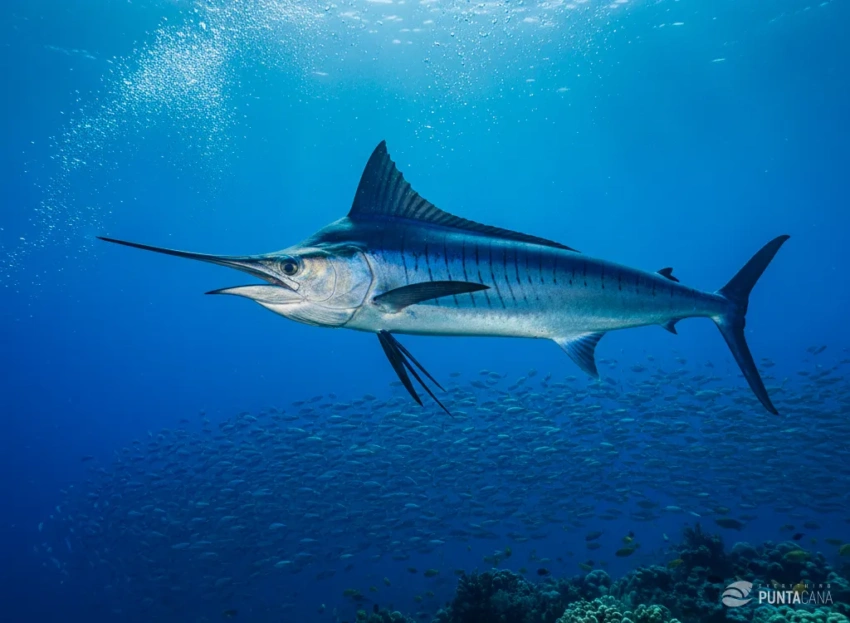
Blue Marlin
The main reason people talk about fishing in Punta Cana is the blue marlin. In the last five years, the blue marlin bite has surged, and some anglers say the Dominican Republic now rivals the best spots in the Atlantic.
Another unique advantage is that you can reach 200-500 meter depths just 10-20 minutes from the marina. This is in contrast to many other regions where large predatory species like yellowfin tuna (Thunnus albacares), mahi-mahi (Coryphaena hippurus), and atlantic sailfish (Istiophorus albicans) are found only after hours offshore.
Besides blue marlin, here’s what you’ll find in local waters:
- White Marlin: More prevalent from January through August, peaking between April and July.
- Sailfish: Abundant in the winter months, from November to February.
- Mahi-Mahi (Dorado): Present year-round, with higher concentrations during the warmer months.
- Yellowfin Tuna: Available throughout the year, with peak seasons varying.
- Wahoo: Commonly caught from November to March.
Inshore fishing also offers opportunities to catch species like snapper, barracuda, and grouper, thanks to the extensive coral reef systems that provide habitats for these fish.
When’s the best time for fishing?
There’s almost always something biting in Punta Cana, but if you’re after big-game fish, summer (especially July through September) is your best bet. This is peak blue marlin season, and some boats report over 20 marlin releases a day during these months.
Blue marlin can appear outside these months, though less predictably. White marlin peak from April to July, sailfish and wahoo are mostly a winter catch, and mahi-mahi and tuna are around most of the year.
No matter the season, early morning and late afternoon are the best times, both offshore and from the beach. Fish are more active during these cooler times, and you’ll avoid the harshest sun. That’s why most charters head out early, usually around 7 AM.
What Types of Fishing Are Available
in Punta Cana?
You can fish from the beach, try the reefs, explore the lagoons, or go deep-sea. Spearfishing is also popular if you’re up for it. Most styles are open to all skill levels, and you don’t need special skills or equipment to get started.
1. Beach and shore fishing in Punta Cana
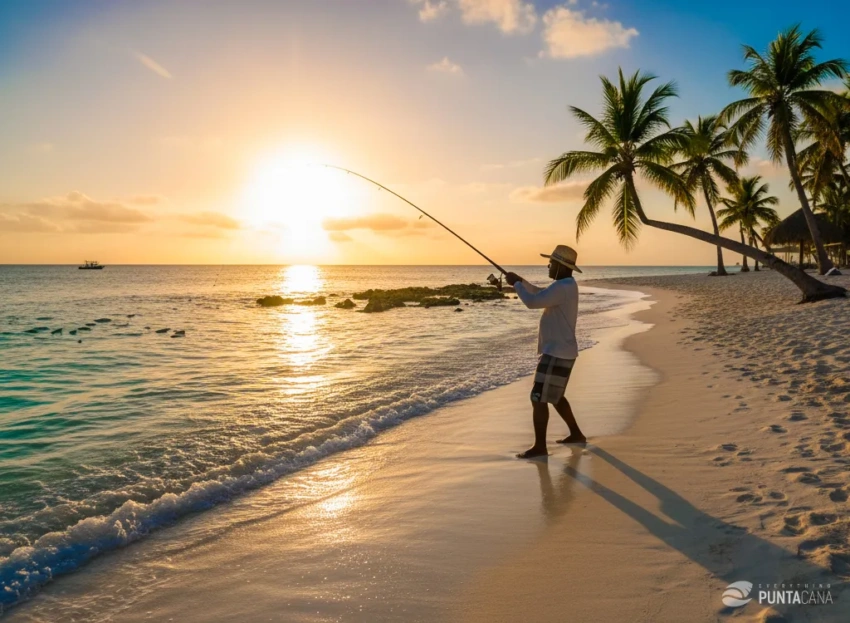
Beach and shore fishing in Punta Cana
Beach fishing in Punta Cana is possible, though it’s not as simple as just showing up and casting anywhere. The coastline is mostly sandy, with reefs not too far offshore. This means the surf can get strong and weedy, which makes shore fishing tricky some days, especially if the wind is up or after a storm.
But if you catch the beach on a calm morning or evening, you’ve got a real shot at small jacks, snappers, or even a barracuda if you’re lucky. The best time for this kind of fishing is usually dawn or dusk. That’s when the wind drops, the sun’s not as intense, and fish tend to move closer in to feed.
If you’re staying at a resort, it’s worth double-checking their rules – some places don’t want lines in the water anywhere near swimmers. However, some private resorts allow guests to fish directly from the property, which is a nice bonus if you want to try fishing without leaving the hotel grounds.
A bit of local knowledge helps. Not every stretch of sand is going to hold fish. Piers, rocky patches, or places where a lagoon or canal meets the sea generally have more going on. The tip of Cabo Engaño and some of the canals around Cap Cana are two examples.
You won’t be pulling in trophy-sized fish here, but you can catch interesting species like sardines, parrotfish, or squirrelfish. Beach fishing in Punta Cana is also relaxed: no seasickness, no big waves, and it’s beginner-friendly.
You might hear about people getting tarpon, snook, or even permit right from the shore in those spots, mostly thanks to tidal flow and baitfish moving through. If you’re not sure where to start, try watching where locals fish or just ask around – most are happy to point you in the right direction if you’re polite about it.
2. Inshore fishing in Punta Cana

Inshore fishing in Punta Cana
Inshore fishing in Punta Cana means working the shallow reefs, lagoons, and coastal estuaries that sit within a mile or two from shore. The coastline here is lined with a long coral reef system, and there’s a good amount of life around these reefs if you’re interested in what’s swimming nearby.
If you take a small boat or kayak just inside the reef line, or cast from calm backwaters, you’ll find a range of species. Snapper, barracuda, jacks, and sometimes snook or tarpon move through Punta Cana’s inshore waters, feeding among the coral and mangrove channels.
Plenty of local charters and guides run inshore trips for anyone who wants to stick to the quieter, shallower parts rather than going offshore. These outings are usually about light tackle fishing, either along the reefs or near the mangroves. You might try bottom fishing for yellowtail snapper, or troll a small lure for barracuda.
Some guides will even combine a bit of snorkeling on the reef with fishing, so you can see what lives below the surface after you’ve put the rod down.
Fly fishing is also an option if you’re up for it. Punta Cana doesn’t have quite the same reputation as a place like Belize for bonefish or permit, but there are some flats and channels (especially around Cap Cana) where you can try for snook and, if you’re lucky, a permit, particularly early in the morning.
As for the seasons, inshore fishing here is possible year-round, but certain species are more common in the winter – tarpon, snook, and jacks seem to show up in greater numbers from November through February, when cooler water brings in more bait.
Overall, the inshore fishery is fun and accessible, but it can be unpredictable, especially since local communities fish these waters for food. It’s good to keep expectations realistic. Still, a day inshore can be a mix of steady fishing and downtime, and suits anyone looking for a slower pace than the big game focus of offshore trips.
3. Lagoon Fishing in Punta Cana
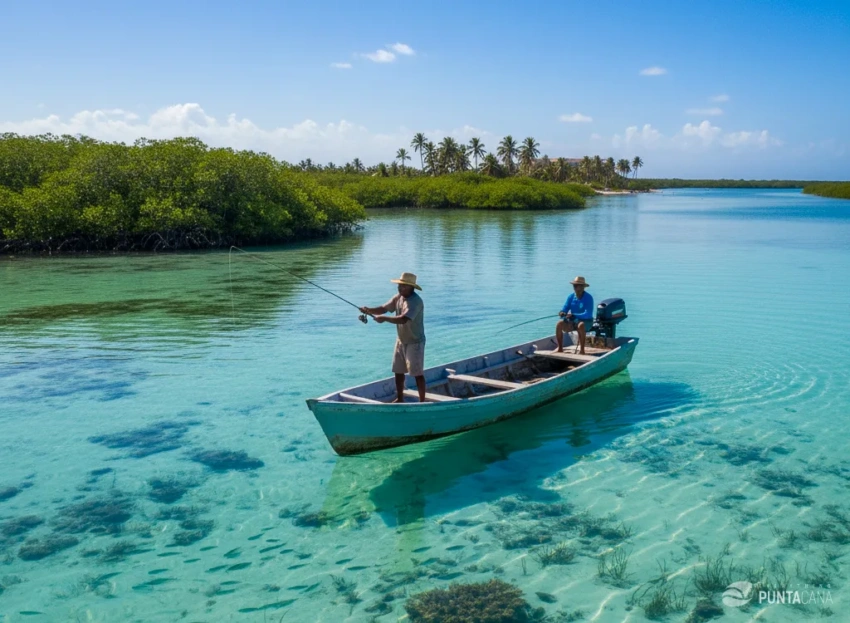
Lagoon Fishing in Punta Cana
Lagoon fishing in Punta Cana is a quieter alternative to the ocean. The most well-known spot is Laguna Bávaro, a brackish lagoon near Cabeza de Toro that’s part of a nature reserve. Most of the action here is focused on tarpon and snook.
Tarpon can range from small juveniles to solid adults and put up a good fight – lots of jumps, and they’re hard to keep on the line. Snook (locals call them róbalo) are another target, usually hiding under mangrove roots, where you have to work for every strike.
You usually need a small boat, kayak, or skiff to fish these waters because most of the shoreline is marshy and overgrown. Local guides run trips with all the gear included and generally practice catch-and-release for both tarpon and snook. Live bait (small fish or shrimp) and surface lures both work.
If you’re into fly fishing, the mangrove edges are good spots for rolling tarpon, especially early or late in the day.
The best time for lagoon fishing is late fall through early spring, with a real peak for tarpon in January to March when water levels and temperatures are right. In summer and early fall, the bite is usually slower – tarpon tend to move deeper or just aren’t as active in the heat.
Besides Laguna Bávaro, there’s Laguna de Nisibón about half an hour north of the main resort area. It’s a lot less crowded, and the tarpon see fewer anglers, but you’ll need a car or local driver to get there.
Almost all lagoon fishing here is catch-and-release, especially for tarpon, which aren’t eaten locally. Snook are usually released too, especially in the nature reserves. Some guides insist on it, and in protected areas, it’s required. If you want to take a photo, keep the fish in the water and get it back in quickly. This helps keep the fishery in decent shape for everyone else.
4. Deep sea fishing – facts and seasonal details
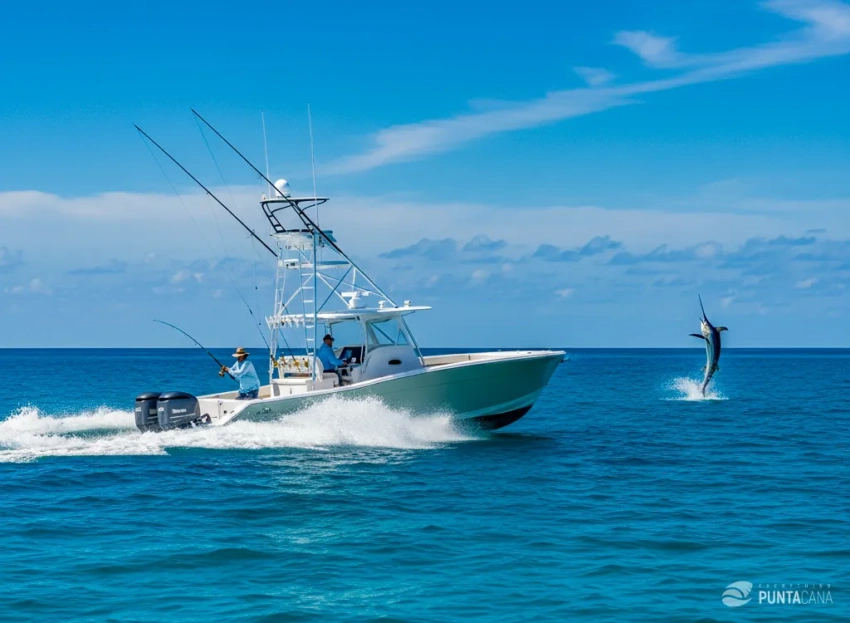
Deep sea fishing in Punta Cana
Deep sea fishing in Punta Cana is mostly shaped by geography. The drop-off into deep water starts only a few miles from shore, so you can reach open-ocean fishing grounds in about 15–20 minutes from the marina. This is different from a lot of other Caribbean destinations where you might have to ride for hours to start fishing for pelagic species.
Most deep sea fishing in Punta Cana is done by trolling – pulling lures or bait behind the boat, to cover ground and target fast-moving fish. The main species found here are blue and white marlin, sailfish, mahi-mahi (also called dorado), wahoo, and yellowfin tuna.
Blue and white marlin are considered the top targets, especially for sport fishers, and both can put up a long fight when hooked. Mahi-mahi and wahoo are common in fall and winter, while yellowfin tuna are seen most reliably from January through March, though they do appear at other times too.
There are real seasonal patterns to what’s biting. These patterns mean that while there’s always something to fish for, the chances of catching specific species change with the season.
- Sailfish are most common from November to February, when the water is cooler. White marlin start showing up in late spring and are around through summer.
- Blue marlin numbers peak from June to September, with the strongest bite usually in August.
- Mahi-mahi and wahoo are present all year but are especially active from October into winter.
All marlin and sailfish are catch-and-release by law in the Dominican Republic. Crews will help land, photograph, and release these fish as quickly as possible. On the other hand, mahi-mahi, wahoo, and tuna are often kept for eating. Most charters will clean and fillet your catch if you want to take it back with you.
A standard charter trip can be a half day (about 4 hours) or a full day (6–8 hours or more). Gear, bait, and crew are included. Most boats also offer drinks, and some provide snacks or a simple lunch. If you’re new to the area, it’s worth asking the crew about what’s biting and what techniques are working – they’ll have up-to-date local knowledge.
While fishing offshore, weather can change and swells can be unpredictable, even on clear days. If you’re prone to seasickness, consider bringing motion sickness tablets. Follow safety briefings and instructions from the crew; they know the waters and will adjust plans if needed.
In summary, deep sea fishing in Punta Cana is mostly practical and accessible. The quick access to deep water, regular presence of big game species, and simple logistics make it a convenient spot for anyone interested in offshore fishing, whether you’re a regular angler or just want to try something new while visiting.
4. Spearfishing in Punta Cana’s coral reefs
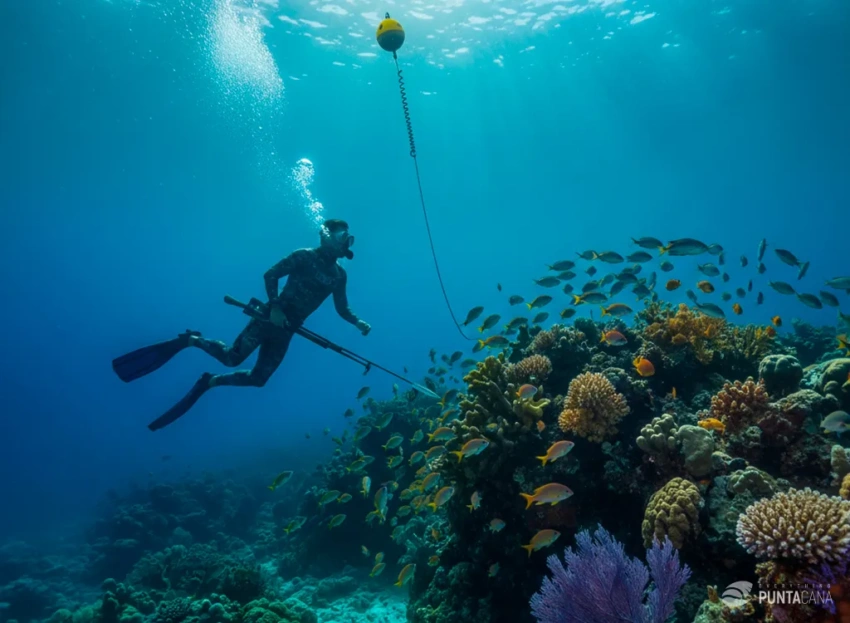
Spearfishing in Punta Cana
If regular fishing isn’t enough of a challenge, spearfishing Punta Cana is a whole different experience. The reefs are full of life and color, making them popular with experienced spearfishers. This style of fishing requires comfort in the water and some skill with a speargun or Hawaiian sling.
The local reefs have a mix of species – snapper, grouper, hogfish, and lionfish are common targets. Lionfish are invasive here, so removing them helps the reef and most guides encourage it.
You’ll need to be comfortable with freediving. Spearfishing is done without scuba gear, and the law usually prohibits using tanks. Most trips mean taking a small boat out to the reef. Water depths are usually between 10 and 40 feet. It’s not complicated, but you do need to be able to hold your breath and stay relaxed underwater.
If you haven’t tried before, it’s best to get some basic snorkeling and breath-hold practice first. Some local guides offer beginner lessons.
Local regulations aren’t strict. There’s no special license needed for tourists, but you should follow common sense: don’t spear undersized or protected species, don’t shoot fish you don’t plan to eat, and avoid fishing in swimming zones or marine reserves.
“Catch and release” doesn’t really exist in spearfishing, so every shot should count. Some larger reef fish can have ciguatera toxin, so ask your guide if you’re unsure what’s safe to eat.
Guides usually handle the basics – gear, boat, and safety. You’ll need a wetsuit or rash guard (for scrapes and jellyfish), a speargun or Hawaiian sling, and weights for diving. Always dive with a buddy or guide. Use a float and flag to stay visible to boats.
If you’re experienced, you’ll find the water clear enough and the fish worth targeting. If you’re new, go with someone who knows the area and the species. Most of what you catch can be eaten the same day. It’s a straightforward, hands-on way to catch dinner, and you’ll see a side of Punta Cana that most tourists miss.
Punta Cana Fishing Charters
Considering the variety of fishing opportunities in the area, it’s no surprise that Punta Cana fishing charters are plentiful and diverse. Booking a charter is often the best way to make your fishing plans easy, safe, and successful.
-

Private Punta Cana Fishing Tour Aboard the Miguelina – 4 Hours of Trolling Fishing
from $600 View Details -

Private Fishing Charter on 32-foot Boat – Punta Cana Deep Sea Fishing Tour 2026
from $640 View Details -

Private Boat Trip in Punta Cana on Scorpio Boat – Ideal for Small Groups (6 Guests)
from $1500 View Details -

Deep Sea Fishing in Punta Cana on a 37ft Sport Boat – Private Trip with Snorkeling
from $660 View Details -

4-Hour Punta Cana Charter Fishing Trip on Fortuna 42 Boat (Bavaro Coast)
from $720 View Details -

Punta Cana Private 40ft Boat Charter – Mar Del Sur Yacht, Up to 9 Guests with Fishing Option
from $1625 View Details -

Deep Sea Fishing in Punta Cana, Dominican Republic – 6-Hour Private Charter on Fortuna 42
from $800 View Details -

6-Hour Punta Cana Deep Sea Fishing on Sherlock 39 Boat (Bavaro)
from $780 View Details -

VIP Punta Cana Fishing Tour – Private Yacht Trip to Saona Island, Natural Pool & Snorkeling
from $3180 View Details -

Private Punta Cana Boat Tour on a Sea Ray 35 – Snorkeling, Professional Crew, Licensed Captain
from $1813 View Details -

Private Boat Rental in Punta Cana – Consuelo 28ft Boat with Optional Fishing Experience
from $1375 View Details -

Punta Cana Private Boat Charter aboard Intrepid 37 – Explore Saona, Catalina + Optional Fishing
from $1875 View Details -

Deep Sea Fishing Punta Cana – Private Trolling Charters Aboard Blue Sky Boat (Up to 5 Guests)
from $650 View Details -

Top-Rated Punta Cana Yacht Rental – Explore the Dominican Republic on a Private Boat – Sea Ray 37
from $2094 View Details -

Private Boat in Punta Cana – Hatteras 53 Luxury Boat up to 15 people
from $2533 View Details -

4-Hour Deep Sea Fishing in Punta Cana on Sherlock 39 Boat
from $680 View Details -

Private Punta Cana Boat Tour with Snorkeling & Trolling Fishing – From Jellyfish Beach to Cabeza de Toro
from $140 View Details
Fishing charters in Punta Cana are widely available and typically offer both private and shared options. Prices can vary depending on the duration and type of trip, but on average, a shared charter for about four hours costs around $100 to $150 per person.
If you prefer a private experience, expect to pay between $450 and $650 for a four-hour trip with your group. Longer trips are also available, with six-hour private charters generally ranging from $700 to $1,000, and full-day, eight-hour trips often priced between $1,200 and $1,400.
Most fishing charters in Punta Cana include all the basic gear you’ll need – rods, reels, bait, and tackle – as well as the services of an experienced captain and crew. Fishing licenses are typically covered in the price. Drinks such as water, soft drinks, and sometimes beer are usually provided, and a few companies also offer snacks or a simple lunch.
Many charters make things easy by including hotel pickup and drop-off in the package. It’s common practice for boats to focus on catch and release, especially for species like marlin, but details can vary, so it’s a good idea to confirm exactly what’s included and what to expect with the charter company before you book.
Average costs for Punta Cana fishing charters
| Charter Type | Duration | Average Cost (USD) | Notes |
|---|---|---|---|
| Shared Charter | 4 hours | $100–$150 per person | Most affordable; join with others |
| Private Charter | 4 hours | $450–$650 per group | Up to 6–8 people |
| Private Charter | 6 hours | $700–$1,000 per group | Up to 6–8 people |
| Private Charter | 8 hours | $1,200–$1,400 per group | Up to 6–8 people |
What do you need to pack for a fishing charter in Punta Cana?
For a fishing charter in Punta Cana, you really don’t need much: strong, reef-safe sunscreen; UV-protection sunglasses; a hat; and lightweight clothing that covers your arms and legs.
Add a rain jacket if it looks cloudy, a reusable water bottle, snacks if you’re picky, seasickness meds if you’re prone to nausea, and a dry bag for your valuables. Most gear is provided, so focus on comfort and sun safety.
Frequently Asked Questions About
Fishing in Punta Cana
What kind of fishing in Punta Cana?
You’ll find pretty much every style: deep sea (offshore, trolling for big pelagics), inshore/reef (snapper, grouper, barracuda), and even some surf or beach casting. There’s also spearfishing and a bit of lagoon fishing if you look for it. Most tourists go out on a charter, but locals fish from shore or small boats.
What kind of fish do you catch in Punta Cana?
The list is long, but the main targets are mahi-mahi (dorado), yellowfin tuna, blue and white marlin, sailfish, wahoo, snapper, grouper, and barracuda. Inshore, expect more snapper, jacks, grouper, and the occasional tarpon.
What fish is local to Punta Cana?
“Local” in the sense of always being around: snapper (several kinds), grouper, and barracuda. Mahi-mahi and tuna aren’t strictly “local” (they migrate), but they’re common much of the year.
How much does it cost to go deep sea fishing in Punta Cana?
Prices vary. Shared charter (group trip) is usually $100 – $150 per person for a half day. Private charter for the whole boat can run $400 – $1,200+ depending on boat size and duration. That includes crew, gear, bait, and often drinks/snacks.
Is there good fishing in Punta Cana?
Yes. It’s not world record stuff every trip, but the deep water is close to shore and the fishing is solid most of the year. The bite can be hot or slow like anywhere, but the chances are pretty good if you go out with someone who knows the area.
What time of year is best for fishing in Punta Cana?
Depends on your target. Blue marlin peak July–September. White marlin are best April–July. Sailfish and wahoo: winter. Mahi-mahi and tuna: good most of the year but better in warm months.
What big fish are in Punta Cana?
Blue marlin, white marlin, sailfish, yellowfin tuna, wahoo, and some decent-size mahi-mahi. Those are your main “big game” fish.
Do I need a fishing license in Punta Cana?
For tourists doing recreational fishing – no. You don’t need a license for catch-and-release or casual fishing. If you’re doing something commercial, different rules apply.
Can you catch tuna in Punta Cana?
Yes. Yellowfin tuna are around offshore. Not guaranteed every day, but they’re a regular catch, especially if you’re trolling with a charter.
Why is deep sea fishing so expensive?
Boats, fuel, maintenance, good gear, and paying the crew—it all adds up. Plus, you’re in the open ocean and burning a lot of fuel just to get to the grounds and troll all day.
What time is best for beach fishing?
Early morning and late afternoon, when the sun isn’t blasting and the fish move in closer to shore.
What is the best bait for fishing?
Offshore: trolling lures, ballyhoo, and sometimes live bait for tuna. Inshore: cut fish, shrimp, squid. From the beach: shrimp or small bits of fish work for snapper and jacks.
Updated on: . Author:

